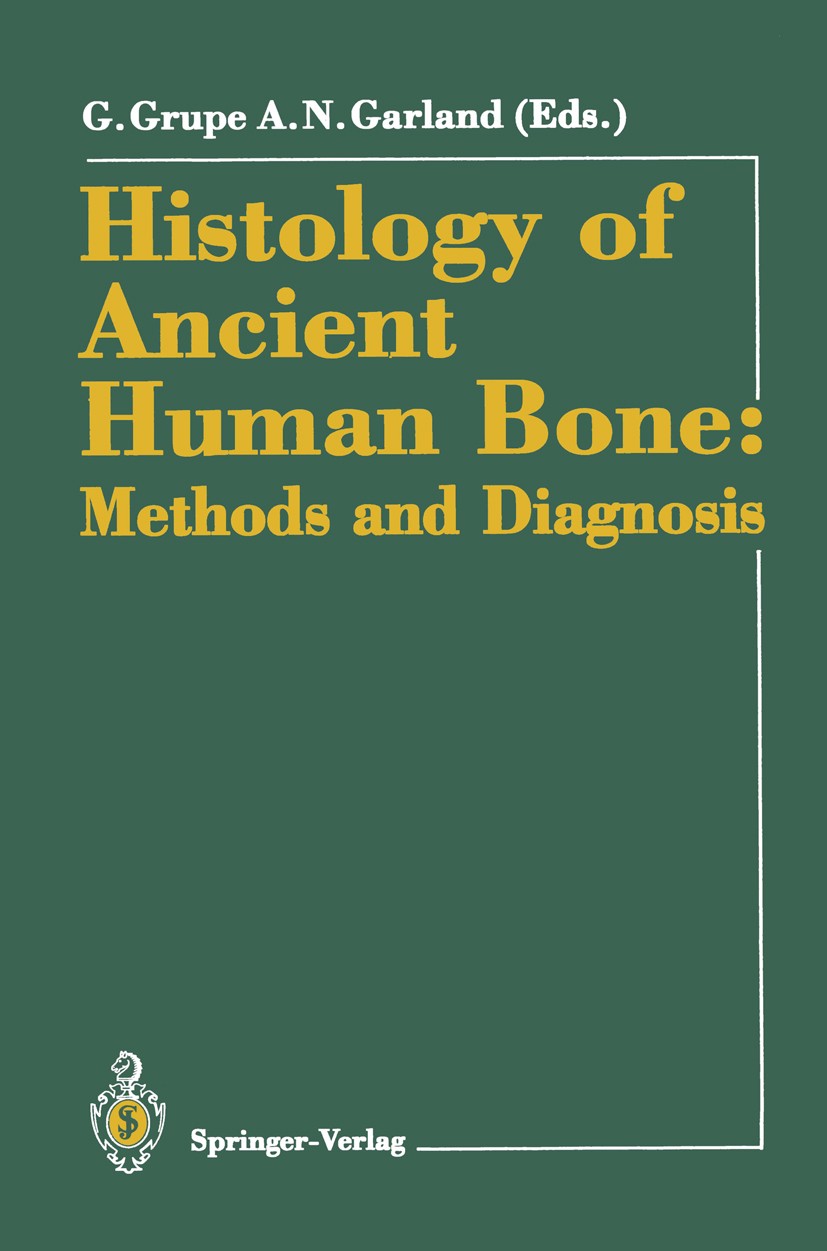| 書目名稱 | Histology of Ancient Human Bone: Methods and Diagnosis | | 副標(biāo)題 | Proceedings of the “ | | 編輯 | Gisela Grupe,A. Neil Garland | | 視頻video | http://file.papertrans.cn/428/427283/427283.mp4 | | 圖書封面 |  | | 描述 | The examination of excavated human bone finds is mainly the domain of anthropologists and forensic pathologists, the former working with ancient and historical specimens, the latter with modern finds. The methodological and diagnostic approaches to these skeletal finds are the same, regardless of the time of burial. For physical an- thropology, bodily human relics are dealt with as historical resources which give clues to ancient population structure, population develop- ment, life-style and subsistence. They are thus able to help scientists understand the present state of human populations. The identification of the finds, whether species diagnosis or the evaluation of individual parameters such as sex, age at death, body size and shape, kinship and pathology follows the same procedure used by forensic patholo- gists, whose task is the identification of bodily relics in cases of crime, mass disaster and the like. However, there are other disciplines which benefit from excavated bone finds. Anatomy gains insights into the morphological variability of the skeleton in time and place. The implications for modern physi- cians and pathologists are at least two-fold: pathological specime | | 出版日期 | Conference proceedings 1993 | | 關(guān)鍵詞 | Histologie; Knochen; Palaeoanthropologie; Palaeohistologie; Palaeopathologie; Rechtsmedizin; anthropology; | | 版次 | 1 | | doi | https://doi.org/10.1007/978-3-642-77001-2 | | isbn_softcover | 978-3-642-77003-6 | | isbn_ebook | 978-3-642-77001-2 | | copyright | Springer-Verlag Berlin Heidelberg 1993 |
The information of publication is updating

|
|
 |Archiver|手機(jī)版|小黑屋|
派博傳思國際
( 京公網(wǎng)安備110108008328)
GMT+8, 2025-10-15 12:01
|Archiver|手機(jī)版|小黑屋|
派博傳思國際
( 京公網(wǎng)安備110108008328)
GMT+8, 2025-10-15 12:01


